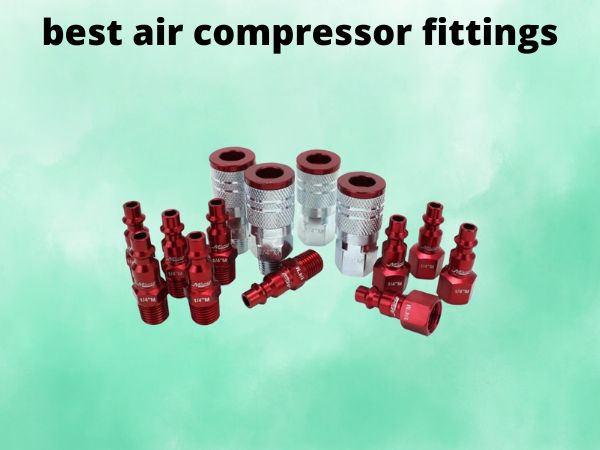How to Adjust Air Compressor Pressure Relief Valve Safely
As a seasoned DIY enthusiast, I’ve learned that properly maintaining and adjusting your air compressor is crucial for ensuring its longevity and optimal performance. One of the most critical components in this regard is the pressure relief valve. This unsung hero not only protects your compressor from dangerous over-pressurization but also plays a vital role in ensuring the safety of both you and your equipment.
In this comprehensive guide, I’ll walk you through the step-by-step process of adjusting your air compressor’s pressure relief valve with confidence and precision. Whether you’re a novice DIYer or a seasoned pro, this article will equip you with the knowledge and skills necessary to handle this important task safely and effectively.
Table of Contents
Understanding the Pressure Relief Valve
Before we dive into the adjustment process, let’s first take a moment to understand the purpose and importance of the pressure relief valve. This essential component is designed to automatically release air from the compressor’s tank when the pressure reaches a predetermined, safe level. This helps prevent the tank from becoming overpressurized, which could lead to catastrophic failure and potentially serious injury.
The pressure relief valve is typically set to activate at a specific pressure, often around 175-200 PSI (pounds per square inch) for standard air compressors. However, it’s important to note that the exact pressure setting can vary depending on the make and model of your compressor. Proper adjustment of this valve is crucial to ensure your compressor operates within its safe pressure range.
Preparing to Adjust the Pressure Relief Valve
Before you begin the adjustment process, it’s important to gather the necessary tools and ensure your work area is safe and well-ventilated. Here’s what you’ll need:
- Adjustable wrench or socket set
- Safety glasses
- Earplugs (optional, but recommended)
- A clean, well-lit workspace
Once you have your tools and equipment ready, it’s time to start the adjustment process. Remember to always prioritize safety and follow the manufacturer’s instructions for your specific air compressor model.
Step-by-Step Pressure Relief Valve Adjustment
1. Depressurize the Air Compressor
Begin by turning off the air compressor and allowing it to fully depressurize. This is a crucial step, as working on a pressurized system can be extremely dangerous. Consult your compressor’s manual for the proper way to depressurize the tank.
2. Locate the Pressure Relief Valve
Identify the location of the pressure relief valve on your air compressor. It’s typically located near the top of the tank or the outlet port. Consult your owner’s manual if you’re unsure of its exact location.
3. Inspect the Valve
Visually inspect the pressure relief valve for any signs of wear, damage, or debris buildup. If the valve appears to be in good condition, proceed to the next step. If you notice any issues, it’s best to replace the valve before attempting to adjust it.
4. Adjust the Valve
Using your adjustable wrench or socket set, carefully turn the adjustment nut on the pressure relief valve. Turning the nut clockwise will increase the pressure at which the valve opens, while turning it counterclockwise will decrease the pressure.
Refer to your compressor’s manual for the recommended pressure setting and make adjustments accordingly. As you make adjustments, periodically check the pressure gauge to ensure you’re within the safe operating range.
5. Test the Valve
Once you’ve made the necessary adjustments, it’s time to test the valve. Slowly increase the pressure in the tank and observe the pressure relief valve to ensure it opens at the desired pressure setting. If the valve opens at the wrong pressure, make further adjustments as needed.
Conclusion
Properly adjusting the pressure relief valve on your air compressor is a crucial maintenance task that can help ensure the safe and efficient operation of your equipment. By following the steps outlined in this guide, you’ll be able to confidently handle this task and keep your air compressor running at its best for years to come.
FAQs
What happens if the pressure relief valve is not adjusted properly?
If the pressure relief valve is not adjusted correctly, it can lead to dangerous over-pressurization of the air compressor’s tank. This increases the risk of the tank rupturing, which could cause serious injury or property damage.
How often should I adjust the pressure relief valve?
The frequency of pressure relief valve adjustments can vary depending on the usage and age of your air compressor. As a general rule, it’s a good idea to check and adjust the valve annually or whenever you notice any changes in the compressor’s performance or pressure readings.
Can I adjust the pressure relief valve while the compressor is running?
No, it’s never safe to adjust the pressure relief valve while the air compressor is running. The system must be fully depressurized before attempting any adjustments to the valve.
What should I do if the pressure relief valve is stuck or not opening properly?
If the pressure relief valve appears to be stuck or not opening at the correct pressure, do not attempt to force it open. Instead, shut off the compressor, depressurize the system, and inspect the valve for any issues. If the valve is damaged or malfunctioning, it’s best to replace it with a new one.
How can I ensure the safety of myself and others when adjusting the pressure relief valve?
Safety should always be the top priority when working on any pressurized equipment. Be sure to wear appropriate personal protective equipment, such as safety glasses and earplugs, and work in a well-ventilated area. Closely follow the manufacturer’s instructions and never attempt to adjust the valve while the compressor is running.
Do I need any special tools to adjust the pressure relief valve?
The tools required to adjust the pressure relief valve are typically quite basic: an adjustable wrench or a socket set. However, it’s always a good idea to consult your air compressor’s manual to ensure you have the right tools for the job.





